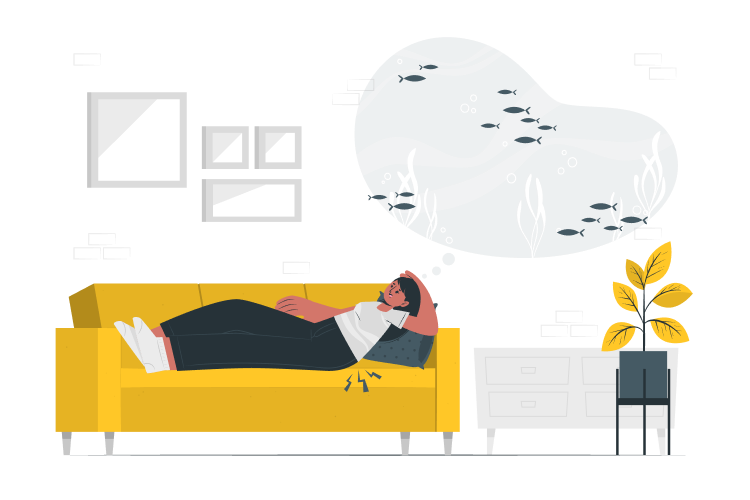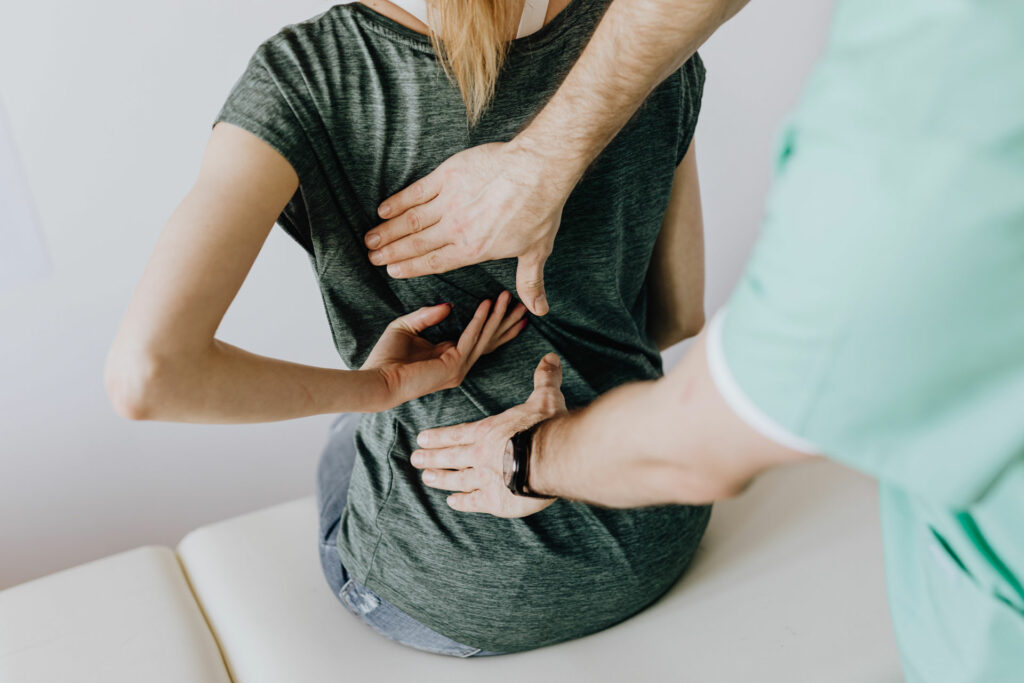Condition · 14 min read · 10 Jun 2021
Learn about low back pain and how you can manage your low back pain.
Getting credible and helpful information is vital to help you recover and manage your back pain.

Getting credible and helpful information is vital to help you recover and manage your back pain.

Australian data shows that around 80% of young people will develop back pain at some point in their life. For 20% of young people experiencing back pain, it negatively impacts their life. Back pain can negatively impact a young person’s capacity to study, sleep, complete tasks at work or school, and engage in physical activity. Young people also struggle with the invisibility of their pain and the lack of understanding, empathy or even acknowledgement from their friends, peers and family, all of which can negatively impact their mental health.
While living with back pain is really challenging, you can live well with back pain if you have the right understanding, the right plan and the right team of health professionals supporting you.
Myth: Disc degeneration and disc bulges on a scan are serious signs of pathology. Back pain is just a physical, structural problem
Fact: Back pain is rarely associated with serious tissue damage or pathology. When back pain is associated with tissue damage, healing typically occurs within 6-8 weeks. Findings on a scan such as disc degeneration and disc bulges are common in young people without back pain
Myth: Back pain needs to be rested and protected. It is dangerous to exercise, bend or lift with back pain
Fact: Back pain is closely related to levels of muscle tension, poor sleep, mood, stress or worry. Good sleep, healthy diet, relaxed movement and exercise helps back pain. Backs get healthier and stronger with graduated movement and exercise
Myth: You need to watch your posture with back pain
Fact: A range of postures are safe for the back. Being too sedentary isn’t good for back pain
Myth: Its not safe to carry a back-pack
Fact: There is no evidence to suggest that wearing a backpack is unsafe for young people
Myth: Ongoing back pain means the spine is becoming more damaged
Fact: Ongoing back pain is related to hyper-sensitivity of the spine’s structures to load and movement. This is related to many factors but is rarely linked to tissue damage
Myth: There is nothing you can do for back pain
Fact: Back pain can be effectively managed with the right support
Myth: Back pain will get worse with time
Fact: With the right care, back pain does not get worse over time
Myth: A back pain flare-up means I have injured my back
Fact: Pain flare-ups are common and are usually cause by factors such as inactivity, stress and low mood
Myth: Scoliosis is a cause of back pain
Fact: While people with scoliosis may experience back pain, they are at no greater risk of back pain than those without scoliosis
Yes: ‘specific’ and ‘non-specific’. Want to know more about kinds of back pain – read on.
You can also use our medical self-check to see if you should seek help.
‘Specific’ back pain, or back pain relating to a clear structural or pathobiological cause is very rare. Less than 1% of people have back pain related to cancer, infection, fracture or an inflammatory process, such as Juvenile Inflammatory Arthritis. Internal organs can also sometimes refer pain to the lower back.
In a small group of young people engaged in repetitive sports such as gymnastics and cricket, back pain can develop from stress to the bony structures of the spine (a stress fracture).
Less than 1% of young people have nerve compression from a disc bulge or prolapse resulting in a loss of power and pain or tingling/numbness sensations running down the leg. In very rare cases, this may also result in a numbness over the saddle area (groin, buttocks, genitals and inner thigh) and an inability to pass a bowel motion or urinate due to a loss of nerve function to this region.
NOTE: It is important to understand that findings such as disc bulges and disc degeneration are also common in people without back pain. This means these changes aren’t always associated with a specific diagnosis.
The majority of people with back pain DO NOT have ‘specific’ pathology. This means that there are other known factors that may be contributing to your back pain.
If you are given a specific diagnosis, your health care professional will work with you to develop a management plan that works for you and that takes into account any specific clinical guidance for your back pain. Depending on what your diagnosis is, the type of management plan will vary. With any health care encounter, we recommend you ask these 5 important questions to ensure you are getting the right amount of care; not too much and not too little.
Some examples of specific diagnoses are listed below:

For 95% of people back pain is ‘non-specific’. Here, spinal structures can become very painful and sensitive without specific structural damage or pathology. This means that there are likely to be other factors that are causing your back pain. While back pain is always REAL, searching for a tissue cause with this type of back pain can be unhelpful and distressing.
In some cases, back pain can be localised, while in others it can co-exist with other pain problems such as pelvic pain, gut pain, neck pain, headaches, and chronic widespread pain. Exploring and understanding the other factors that are known to cause back pain, that are within your control and that with help and support you can change, is the key. Other factors known to cause ‘non-specific’ back pain include:
All these factors differ between individuals and can result in tension in the back and ‘core’ muscles. This can result in heightened sensitivity (also known as hypersensitivity) to touch, pressure or temperature and to normal movement, postures, or activities.
For example, ‘non-specific’ back pain in some people can occur with repeated activity (i.e. sport), or with sudden or awkward loading on the back. This most often happens when you’re doing too much, you’re run down, or not active enough. It’s like a ‘sprain’ that can be very painful but usually recovers quickly with gentle progressive movement and activity.
At other times, ‘non-specific’ back pain can occur without any clear mechanical trigger. This kind of back pain can occur when you are stressed, sad, not sleeping well, and are run down or unwell. It can also occur when you are more sedentary i.e. sitting or studying for long periods. This kind of back pain is a bit like an intense headache that can develop with little prior warning.
‘Non-specific’ back pain can be really intense and scary, and even small movements can hurt. Muscles in the back might feel like they “seize up” to guard the back as a protective response to the pain. Most young people with this kind of back pain naturally recover in a week or two.
Working with a health care practitioner to coach you through this process can help you regain full confidence, mobility, and functional capacity, especially if you feel tense, fearful and unsure about what to do.
Scans (x-rays or other imaging) are not recommended for most young people with back pain. The exception is when ‘specific’ pathology is suspected, for example when there is:
Research shows that up to 30% of 16-year-olds and 45% of 21-year-olds with NO back pain show signs of disc degeneration and disc bulges. These findings occur normally and are not indicative of serious pathology.
These findings can sound scary and can lead a person to start to worry about their backs in an unhelpful way and over-protect movements and activities. Checking out our pain management modules, helps you to find ways to safely progress towards recovery from back pain.
You and your health professional can work together to develop a management plan. Knowing what to ask your health professional is important.
Ask your healthcare professional what the best evidence is for managing your back pain (benefits and risks, costs and what happens if you do nothing). View our recommended care fact sheet (PDF) including 5 important questions you need to ask your health professional about your care.
Some of the most effective options for managing back pain are simple, low risk and non-medicine based. The approach is informed by current best evidence practice – that means is shown to be safe and effective.
Understanding the factors (i.e. physical, lifestyle or psychological) linked to your back pain, is important as it helps you and your heath team to target the best way to manage the pain, as well as recover and prevent it from recurring. To easily understand the factors influencing your back pain, download our low back infographic.
Over-protecting the back is a problem and can delay recovery. Whether your back pain is recent, or you have had back pain for a long time, moving in a paced way (that is taking the middle road and doing little bits often), and building up gradually over time, helps you recover. See our getting back to what you want to do module.
Moving doesn’t damage your spine although you may feel pain initially as your body gets used to moving again. So, it’s really normal to experience some back pain as you begin to move and exercise. Try not to be afraid of the pain or worry about re-injury. Fear of pain and movement usually causes us to tense up, worry and overprotect ourselves, and we have good evidence that this can make back pain worse and slow recovery.
Gentle relaxed movement, deep breathing exercises and graduated physical activity all help to calm your system and prevent the persistence or worsening of your pain. As you keep moving, maintaining your usual activities and adopting a paced approach to activity, exercise and work, pain will usually settle.
Daily exercise helps to boost your own inbuilt pain control systems. This can be a very effective way of improving your function and reducing your pain. You don’t have to get hot and sweaty: walking and yoga are also good forms of activity.
Bed rest usually leads to poorer outcomes and slower recovery. Stay at school, study and work if possible, even if you require short-term changes in your study or work habits. Keep engaged in day to day activities and maintain your social connectivity as this leads to better outcomes e.g. encourages normalcy, gets you moving, distracted and experiencing happy things.
Young adults experience pain in various ways. We know that it can be really hard to stay positive. Experiencing low mood, anxiety, fear and many other emotions is very common and is a normal response to an abnormal situation when you have back pain. Remember that back pain is rarely life threatening, it usually gets better and you are not alone – there is help. Getting help early is important. You might also find the approaching pain module useful. If you feel distressed and can’t cope with the pain, please seek medical advice early.
Sleep is powerful natural pain ‘medicine’. Getting more than 6-7 hours of sleep a night is important and helps reduce the risk of many health conditions. Check out the sleep and pain module.
Sleeping well helps to boost immune function, lift mood and reduce tissue sensitivity. Regular sleep times, reducing screen time and avoiding alcohol /caffeine before bed can improve sleep quality. Relaxation techniques and regular exercise may be helpful for improving your sleep.
Growing evidence shows that abdominal obesity (fat around your belly) is associated with back pain and sciatica (nerve pain). Losing weight is really difficult, but certainly possible with the right support. Consider seeking help from a dietician or nutritionist with expertise in this area.
Smoking is another predictor for persistent back pain, so getting assistance to quit is a great idea.
Drinking too much alcohol can increase back pain in the long run. Alcohol disrupts sleep, lowers mood and can be dangerous (even fatal) in combination with some medicines. Reducing your alcohol intake is helpful. Get help here.
In a minority of people (20-30%), back pain can persist beyond 8-12 weeks. Importantly, this is usually NOT because there is something damaged in the back. Factors that predict ongoing back pain include:
These things can combine to make us more sensitive and over-protective of our backs so that we can get stuck in a vicious cycle of pain and disability.
However, there is a way out of pain. View our management modules for helpful tips and skills to manage your pain and recovery.
The key to effectively managing persistent back pain is finding a good health team who can work with you to support your management. This process takes time and is often really hard to do when you are in pain. Getting support is a good idea. Good care includes:
Health professionals can work with you to help you better understand your back pain and assist you with ways to manage your pain, relax your body and regain confidence, mobility and function and do the things in life that matter to you.
You can also check out our pain management modules to get more help. Your GP or health professional may be able to guide you in your selection of the modules if you are unsure which ones to do.

Check out our recommended low back care fact sheet (PDF). Medicines do not work well for back pain. Clinical trials show they are not very effective. They also have significant side effects.
Here is a summary of current recommendations for use of medicines in low back pain care. You can read more about this in the medicines management module. While medicines may be helpful, they are not for everyone:
If you have severe pain, you should discuss with your doctor the risk of harm versus benefits when using stronger medicines.
While strong pain medicines have been used for people with low back pain, current evidence shows:
They do not work
They cause significant harm
Are not recommended at all for the management of non-specific low back pain.
Pain can mean we become over-protective, stopping valued life activities: see our making sense of pain management module
Looking back at your progress can help, as you can see how gradually you are regaining activities that you value. Sustaining your efforts brings rewards
Relaxed movement and daily exercise help to engage your own body (endogenous) pain control systems helping to improve your quality of life
Healthy lifestyle habits (like exercise and quality sleep) help reduce the risk of back pain persisting
Check out our approaching pain module for help
If your pain is severe and distressing, please seek health professional help.
For more information visit Cochrane Plain Language Summaries and download the consumer’s guide to managing back pain.